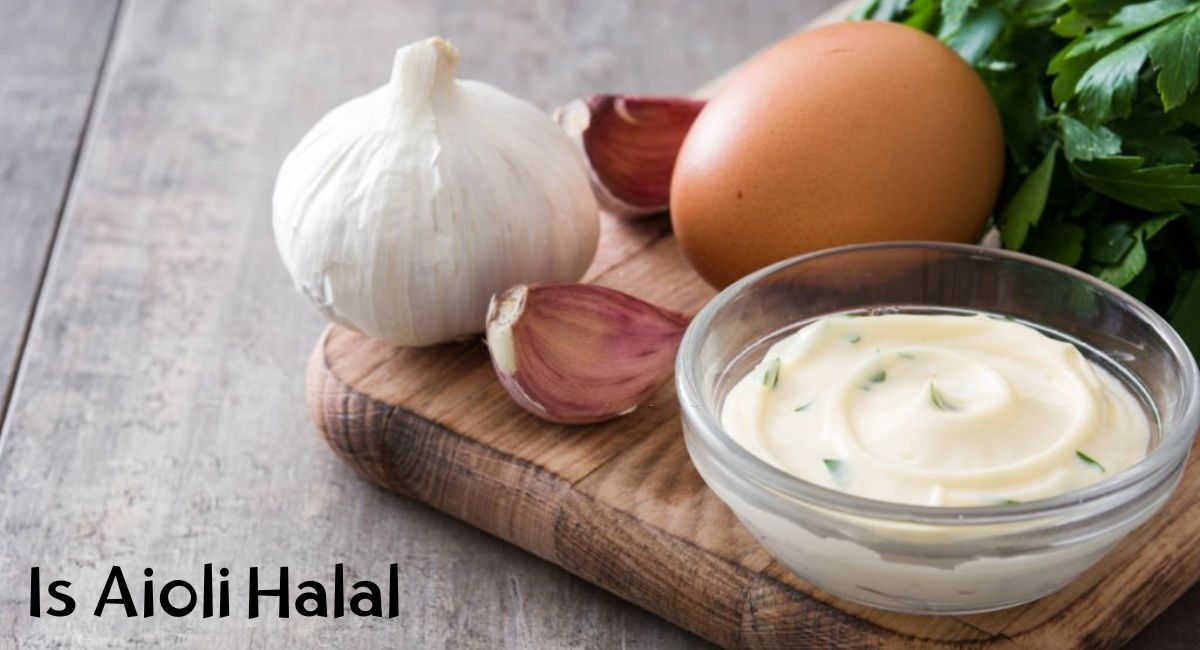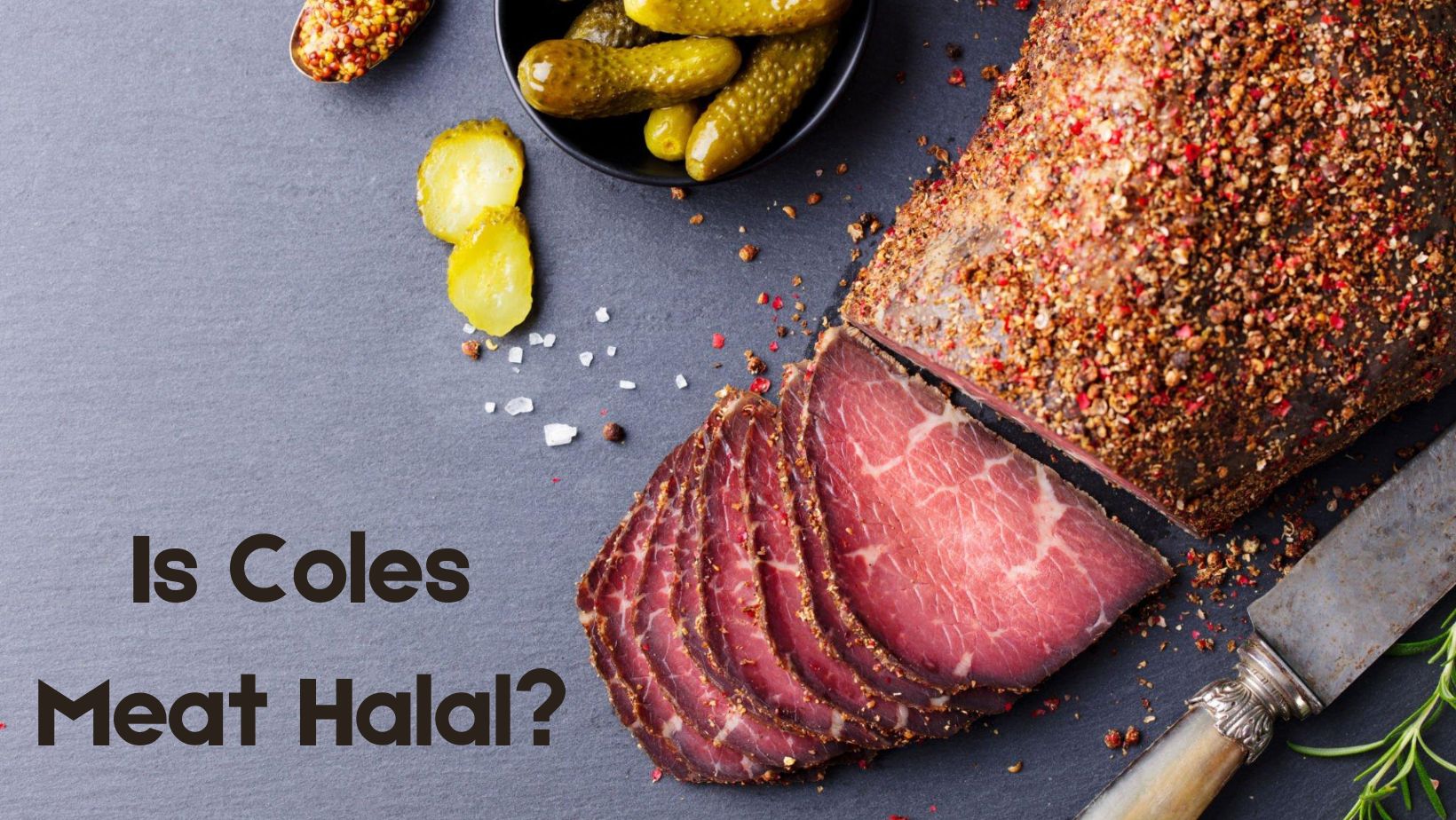Aioli, a creamy and flavorful condiment hailing from Mediterranean cuisine, has made its way into culinary creations worldwide. This versatile sauce, traditionally crafted with a base of garlic, olive oil, and emulsifiers, has become a beloved accompaniment for everything from crispy fries to grilled vegetables. However, for individuals adhering to the principles of Halal dietary restrictions, the question arises: Is aioli Halal?
In this article, we embark on a flavorful journey to unravel the Halal status of aioli. We will delve into the key ingredients that constitute this delectable dip, examine the potential sources of concern for Halal-conscious consumers, and provide insights on how to make or choose Halal-certified aioli. Whether you’re a culinary enthusiast or someone seeking clarity on dietary choices, join us as we explore the intersection of aioli and Halal principles.
Is Aioli Halal
Traditional aioli, made with garlic, olive oil, egg yolks, and lemon juice or vinegar, is generally considered halal, as its primary ingredients do not include any haram (forbidden) substances in Islamic dietary laws. However, whether a specific aioli product or preparation is considered halal can depend on various factors, including the source and processing of its ingredients.
Here are some considerations to keep in mind:
- Cross-Contamination: If aioli is prepared in a kitchen or facility that also handles non-halal ingredients, there could be a risk of cross-contamination. It’s important to ensure that utensils, equipment, and surfaces used to prepare the aioli are clean and not contaminated with haram substances.
- Emulsifiers: Some commercially produced aioli products may contain emulsifiers or stabilizers that could be derived from animal sources. It’s essential to check the ingredient list on the packaging to verify the source of these additives.
- Alcohol Content: Some aioli recipes or commercial products may contain small amounts of alcohol as a flavoring agent or preservative. Muslims typically avoid consuming foods or products that contain alcohol. Check the ingredient list to confirm whether alcohol is used.
- Flavor Variations: Flavored aioli varieties, such as garlic herb or chili aioli, may contain additional ingredients. Be sure to check the ingredient list for any non-halal components.
If you are concerned about the halal status of a specific aioli product or preparation, it’s advisable to:
- Check the ingredient list carefully for any haram or questionable ingredients.
- Contact the manufacturer or supplier for more information about the sourcing and processing of ingredients.
- Consider preparing your own aioli at home, using halal-certified or trusted ingredients to ensure compliance with Islamic dietary guidelines.
There are halal-certified and vegetarian versions of aioli available in the market that use alternative ingredients, such as soy-based or plant-based substitutes, to mimic the creamy texture of traditional aioli.
It is essential for consumers to read food labels carefully and look for relevant halal certification symbols or labels when purchasing aioli or any other food products. These labels indicate that the product has been certified by a reliable halal certifying authority and meets the necessary halal requirements.
Several brands offer halal-certified aioli, and these can be easily identified by checking the product packaging for halal certification symbols or labels. Some popular brands include Hellmann’s Real Aioli and MasterFoods Roast Garlic Aioli, which have been certified halal.
Is Heinz Garlic Aioli Halal
The halal status of Heinz Garlic Aioli is uncertain. Two of the most important indicators of a food item being halal are halal ingredients and a halal certifications.
The ingredients in Heinz Garlic Aioli include soybean oil, garlic, water, liquid whole egg, vinegar, sugar, salt, liquid yolk, modified corn starch, hydrolyzed egg yolk, citric acid, natural flavor, lemon juice concentrate, spices, calcium disodium EDTA, dried garlic, dried onions, and mustard oil.
All these ingredients are inherently halal.
However, as of now, there is no specific information available on whether Heinz Garlic Aioli is halal-certified. Without official certification, it is challenging to conclude whether this product meets the strict requirements of Islamic dietary laws.
What is Aioli
Aioli is a Mediterranean sauce that is known for its creamy texture and rich garlic flavor. The word “aioli” is derived from the Provençal Occitan word “alhòli,” which itself is a combination of “alh” (garlic) and “òli” (oil). Aioli is sometimes referred to as garlic mayonnaise due to its similar texture and the presence of egg yolks.
The history of aioli is closely tied to the Mediterranean region, particularly in countries like Spain and France.
Aioli, as we know it today, is closely associated with the Provence region of southern France. It was traditionally made by crushing garlic in a mortar and pestle and then slowly incorporating olive oil to create a thick, emulsified sauce. This version of aioli remains popular in the Mediterranean.
Over time, regional variations of aioli have emerged. Some recipes include egg yolks to help with the emulsification process, while others use lemon juice or vinegar for added flavor and acidity. In some regions, additional ingredients like mustard or herbs may be included.
Today, aioli has gained popularity well beyond the Mediterranean and is used as a dipping sauce, condiment, or dressing in various culinary applications. It is commonly served with seafood, vegetables, grilled meats, and as a spread for sandwiches and burgers.
Many modern versions incorporate different flavors, such as roasted red pepper aioli or saffron aioli, to suit a wide range of dishes and preferences.
Aioli Ingredients and Recipe
Traditional aioli is a simple yet flavorful sauce made with garlic, olive oil, and a few other ingredients for emulsification and flavor. Here’s a basic recipe for homemade aioli:
Ingredients:
- 2-3 cloves of garlic, peeled and minced
- 1 large egg yolk (at room temperature)
- 1 teaspoon Dijon mustard (optional)
- 1 cup extra-virgin olive oil
- 1-2 tablespoons lemon juice (or white wine vinegar), to taste
- Salt and freshly ground black pepper, to taste
Instructions:
- Prepare the Garlic: Start by mincing the garlic cloves as finely as possible. You can also use a garlic press for this step to create a smooth paste.
- Make the Base: In a mixing bowl, add the minced garlic, egg yolk, and Dijon mustard (if using). The Dijon mustard is optional but adds a bit of tang and helps with emulsification.
- Whisk the Base: Whisk the egg yolk, garlic, and mustard together until well combined.
- Emulsify with Olive Oil: Begin adding the olive oil very slowly, drop by drop, while continuously whisking the mixture vigorously. This is a crucial step in making aioli. Gradually, you can increase the flow of oil to a thin stream as the emulsion begins to form. Continue whisking until you’ve incorporated all the oil and the mixture has thickened.
- Add Lemon Juice (or Vinegar): Add the lemon juice (or white wine vinegar) to the emulsified mixture. This not only adds flavor but also helps to stabilize the emulsion. Start with about a tablespoon and adjust to your taste preferences. You can add more for a tangier aioli.
- Season and Adjust: Season the aioli with salt and freshly ground black pepper to taste. Taste it and adjust the seasoning, lemon juice, or garlic as needed. If you want a stronger garlic flavor, you can add more minced garlic.
- Serve or Store: Your homemade aioli is ready to use! Serve it immediately as a dip for vegetables, seafood, or as a spread for sandwiches and burgers. You can also refrigerate it in an airtight container for a few days.
Note: Traditional aioli can be quite strong in garlic flavor. If you prefer a milder version, you can use fewer garlic cloves or reduce the amount of garlic in the recipe.
While this is the classic recipe, there are many variations of aioli that incorporate additional ingredients like herbs, roasted red peppers, saffron, or chili flakes to create unique flavors to suit various dishes. Feel free to experiment and customize your aioli to your taste preferences.
How to Use Aioli
Aioli is a versatile sauce that can be used in a variety of ways to add flavor and creaminess to your dishes. Here are some popular ways to use aioli:
- Dip: Aioli makes an excellent dipping sauce for a wide range of foods. Serve it with fresh vegetables (carrots, celery, cucumber, bell peppers), fried or roasted potatoes, sweet potato fries, or crispy onion rings. It’s also great for dipping bread or baguette slices.
- Seafood: Aioli pairs wonderfully with seafood. Use it as a dipping sauce for shrimp, crab, lobster, or calamari. It’s a classic accompaniment for fish and chips.
- Burgers and Sandwiches: Spread aioli on burger buns or sandwiches as a flavorful condiment. It works particularly well with grilled chicken, turkey, or beef burgers. You can also use it on a veggie burger or as a sauce for a club sandwich.
- Salads: Aioli can be thinned out with a bit of water or lemon juice to create a creamy salad dressing. It’s especially tasty on salads featuring roasted vegetables, grilled chicken, or seafood. Try it on a potato salad or coleslaw for a creamy twist.
- Grilled Meats: Use aioli as a dipping sauce or drizzle it over grilled meats such as steak and lamb. It adds a burst of flavor and creaminess to your grilled dishes.
- Vegetables: Roasted or grilled vegetables, such as asparagus, zucchini, or artichokes, pair well with aioli. Drizzle it over the veggies before serving or use it as a dip.
- Sandwich Wraps: Spread aioli on tortillas or flatbreads before assembling wraps or burritos. It adds a creamy and garlicky element to your wraps, making them more flavorful.
- Tacos: Use aioli as a taco topping or drizzle it over your tacos for a creamy contrast to the other ingredients. It’s especially good with fish tacos and shrimp tacos.
- French Fries: Just like ketchup or mayonnaise, aioli is a fantastic condiment for french fries. The garlic and creaminess elevate the flavors of the fries.
- Sushi: Some people enjoy aioli with sushi rolls, particularly those that contain tempura or other fried ingredients. It can be used as a dipping sauce or drizzled over the rolls.
- Bruschetta: Use aioli as a base for bruschetta instead of plain mayonnaise. Top slices of toasted bread with aioli and your favorite toppings, such as diced tomatoes, basil, and balsamic glaze.
- Marinades and Glazes: Mix aioli with other ingredients like herbs, lemon juice, or spices to create flavorful marinades or glazes for grilled chicken, fish, or vegetables.
Also Read:
Is Mayonnaise Halal or Haram: Discover the Halal status of mayonnaise and whether it meets the dietary guidelines for Muslims. Dive into the details of its ingredients and production process to determine if this popular condiment is permissible for your consumption.
Is Ranch Dressing Halal or Haram: Uncover the truth about ranch dressing and its compatibility with Halal dietary restrictions. Explore the key ingredients and preparation methods to determine whether this creamy salad dressing aligns with your Halal lifestyle.
Is Tartar Sauce Halal or Haram: Delve into the world of tartar sauce and its Halal suitability. Learn about the components that go into this seafood accompaniment and gain insights into whether it adheres to Islamic dietary laws, ensuring a clear understanding of its permissibility.
Is Tahini Halal Certified: Discover the halal status of tahini in our latest article. Delve into the world of this creamy sesame paste and find out if it meets the requirements of halal dietary guidelines. Whether you’re a fan of Middle Eastern cuisine or simply curious about halal food options, this article has the answers you seek.
Is Hummus Halal Certified: Dive into the delectable world of hummus and explore its halal status. From its origins in the Middle East to its global popularity, we dissect the ingredients and preparation methods to determine if hummus is a halal-friendly treat. Read on to learn whether this beloved dip can be part of your halal diet.






